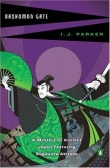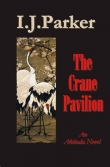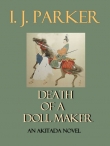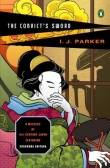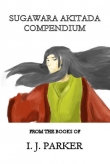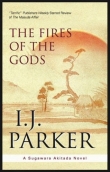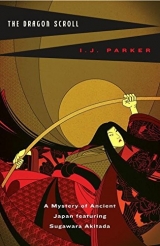
Текст книги "The Dragon Scroll "
Автор книги: Ingrid J. Parker
Жанр:
Исторические детективы
сообщить о нарушении
Текущая страница: 20 (всего у книги 20 страниц)
The events in this novel are fictional, but they play out against the politics and culture of the eleventh century. Akitada is a member of the ruling class and serves in the central government in the capital, but he is on the very fringes of their slowly eroding power. He is well born, university educated, fluent in the Chinese language of government, imbued with Confucian ideals, and struggling to climb the administrative ladder of rank, power, and privilege. Unlike most of his peers, he consorts with the common people, is inept at poetry, and dislikes the Buddhist faith.
Early Japanese culture was based on that of ancient China. Thus, the calendar followed the sexagenary cycle, and era names were periodically designated by the court. To simplify greatly, there were twelve months and four seasons as in the West, but the year began about a month later. In the eleventh century, a workweek lasted six days, starting at dawn, and was followed by a day of leisure. As in the Chinese system, the day was divided into twelve two-hour segments. Time was kept by water clock and announced by guardsmen, watchmen, and temple bells. Generally only the upper class and some of the clergy could read and write. For the government official that meant being able to read and write Chinese in addition to Japanese. Upper-class women and others read and wrote in their native language. These women particularly were responsible for the rich and beautiful literature of the time. Lady Murasaki, a lady-in-waiting to one of the empresses, wrote the first novel in the world, The Tale of Genji.
By the eleventh century, Japan had two religions, Shinto and Buddhism. They coexisted peaceably. Shinto, the native faith, venerates the kami, divine forces in nature that assure good harvests. Buddhism, imported from China via Korea, became extremely powerful through the court aristocracy. Shinto is responsible for many taboos. Buddhism stipulates a hereafter involving both hell and paradise. There were many well-endowed Buddhist temples, monasteries, and nunneries throughout the country.
Much of life during these times was restricted by innumerable superstitions, ranging from belief in ghosts and supernatural monsters to directional taboos that forbade certain directions on certain days of the year. Medicine was primitive in many ways and practiced both by university-trained physicians and monks or pharmacists. It involved herbal medicines, acupuncture, and moxabustion (the burning of herbal cones on the skin), as well as yin-yang correspondences and the sexagenary cycle.
Buddhism dictated a meat-free diet consisting mostly of rice, other grains, fruit, vegetables, and fish. People still drank rice wine in preference to tea. Men did not shave the top of their heads and wore their hair long and twisted into a topknot; women wore theirs loose, trailing to the floor, or tied with a ribbon. Upper-class women blackened their teeth. Depending on class, clothes were made from either silk or hemp. The upper classes layered their simple kimono-style garments lavishly, while peasants made do with short pants and shirt, or even just a loincloth. This was not yet the time of the samurai, but martial arts of all sorts were gradually becoming important. Nobles were certainly taught to ride, use a bow and a sword, and engage in battle, but most preferred writing poetry and participating in court ceremonial. Fighting with wooden swords (kendo) was known, but for the common man the weapon of choice was the staff or pole(bo), which was readily available and less expensive, hence Tora’s stick-fighting skills (bo-jutsu).
The role of women in early Japanese society was restricted. Upper-class women spent most of their lives in the inner apartments of their parents’ or husband’s home, while the middle class and poor worked alongside their men. Upper-class women in the eleventh century could own property, but they were under the control of the men in their family. Lower-class women had more freedom but little leisure to enjoy it. Ayako is, of course, not typical of the women of her time, though sexual favors were freely given and taken in all classes, and noblemen not only practiced polygamy but conducted affairs on the side.
The issue of law and order is important for crime and detective fiction. In some ways, eleventh-century Japan was quite modern in this respect. It had a police force, judges, prisons, and a set of laws pertaining to crime and punishment. However, since Buddhism forbade killing, the worst that could happen to a murderer was that he would be condemned to exile at hard labor and his property and that of his family be confiscated. Interrogation permitted torture, since confession was necessary for conviction. Prisons were generally full but emptied periodically through general amnesties. As a result, crime of all sorts tended to flourish, to the great frustration of law-abiding citizens.
Kazusa province was part of what became modern Chiba prefecture, and the famous Tokaido highway, linking the eastern provinces to the capital, already existed, but much of the detail for Akitada’s journey and for life in Kazusa is fictional.
Some of the plots in The Dragon Scroll are loosely based on ancient Japanese tales. The pirate plot and the case of the missing lady-in-waiting were suggested by episodes inUji Shui Monogatari, and the story of the three monks has its source in Sannin Hoshi.
